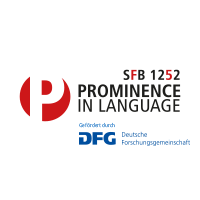A02 - Exploring intonation styles: A tutorial on wiggliness and spaciousness
Simon Wehrle
During the analysis of intonation in autism as part of project A02, it was noted early on that previous descriptions of intonation style—or speech melody—in autism feature a wide range of often contradictory attributes. The same can be said about much research on regional dialects or non-native speech. This issue seems firstly related to a lack of objective, data-driven analysis in many cases, but more specifically also to the fact that there seems to be no established quantitative measurement that captures the time-varying dynamics of pitch.
With this in mind, Simon Wehrle collaborated with Francesco Cangemi (postdoc in A02 until 2023, now at Tokyo University of Foreign Studies) and Martine Grice (PL A02) to develop a new method which aims to capture intonation styles along the two dimensions of Wiggliness and Spaciousness. Wiggliness specifically measures the liveliness of pitch in the form of slope changes per seconds. The complementary dimension of Spaciousness is closely related to pitch range in measuring the extent of the two largest rises and falls within a pitch contour (see Fig. 1 and Chapter 3 of Simon Wehrle's thesis [1], for more detail).
This innovative approach offers researchers a fresh perspective on intonation analysis. By focusing on the dynamics of pitch, subtle variations in intonation styles can be uncovered and related to listener impressions and more conventional metrics. Wiggliness and Spaciousness are related to global prosodic properties whereby high values indicate that there are more, and more pronounced, prosodically prominent events (in terms of voice pitch) in a given utterance
The analysis method has been made accessible to the research community through comprehensive documentation and open-source code. The availability of scripts and datasets in an OSF repository ensures that the method can be easily implemented in other studies and user feedback contributes to further development.
Beyond investigations of speech melody in conversations between autistic adults [1-3], the method has thus far been applied in Cologne to identify prosodic correlates of oral reading proficiency in school children [4], in the process offering perceptual validation of the metrics used, and to describe diachronic changes in the speaking style of Italian newsreaders [5] (all articles and the associated data and code are open-access and freely available). Ongoing work includes an assessment of speech in Kenyan English–Kiswahili bilinguals in collaboration with Billian Otundo (University of Bayreuth). Outside Cologne (and outside Germany), a number of other researchers have used the online tutorial independently to support investigations into various linguistic phenomena [6-10].
As our method is adopted more widely, it is continuously adapted and fine-tuned. In future developments, the analysis process is set to be streamlined and simplified, and dedicated perception studies have been designed to shed more light on the dimensions of Wiggliness and Spaciousness as well as their relation to each other, to listener impressions, and to essential concepts in intonational phonology.
References
[1] Wehrle Simon. 2023. Conversation and intonation in autism: A multi-dimensional analysis. Berlin, Germany: Language Science Press.
[2] Wehrle Simon, Francesco Cangemi, Harriet Hanekamp, Kai Vogeley & Martine Grice. 2020. Assessing the intonation style of speakers with Autism Spectrum Disorder. Proceedings of Speech Prosody 2020. 809–813.
[3] Wehrle Simon, Francesco Cangemi, Kai Vogeley & Martine Grice. 2022. New evidence for melodic speech in Autism Spectrum Disorder. Proceedings of Speech Prosody 2022. 37–41.
[4] Wehrle Simon & Christopher Sappok. 2023. Evaluating prosodic aspects of oral reading proficiency in schoolchildren: effects of gender, genre and grade. In Radek Skarnitzl & Jan Volín (eds.), Proceedings of the 20th International Congress of Phonetic Sciences, 1275–1279. Prague, Czech Republic.
[5] Savino Michelina, Simon Wehrle & Martine Grice. 2024. The prosody of Italian newsreading: a diachronic analysis. Proceedings of Speech Prosody 2024.
[6] Prechtel Christine. 2023. A cross-linguistic comparison of lexical stress strength and macro-rhythm strength. Ph.D. thesis, University of California, Los Angeles.
[7] Caputo Ruth. 2023. Listen up: Children’s and adults’ listening effort for intelligible L1 and L2 speech. Ph.D. thesis, Washington University in St. Louis.
[8] Tatar Csilla, Jonathan Brennan, Jelena Krivokapić & Ezra Keshet. 2023. Early prosodic marking of irony and its perception in autistic and neurotypical adults. The Journal of the Acoustical Society of America 154. A158–A159.
[9] Altmiller Ruth & Kristin J. Van Engen. 2023. Prosodic variation in intelligible L2-accented speech: Using acoustic measures to predict listening effort. The Journal of the Acoustical Society of America 153. A340.
[10] Xi D & K. Zhu. 2022. The characteristics of falling boundary tone when Chinese college students of German department read German sentences. Modern Linguistics 10. 421.
